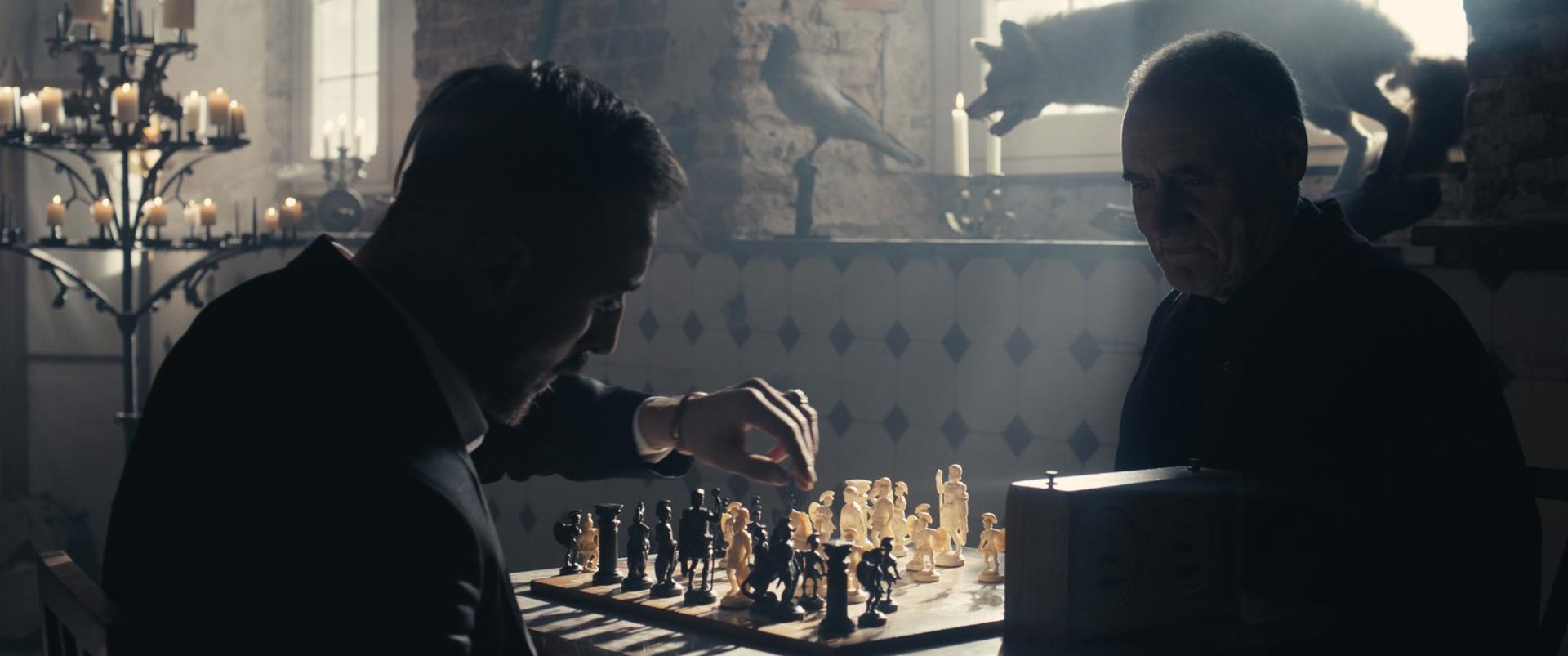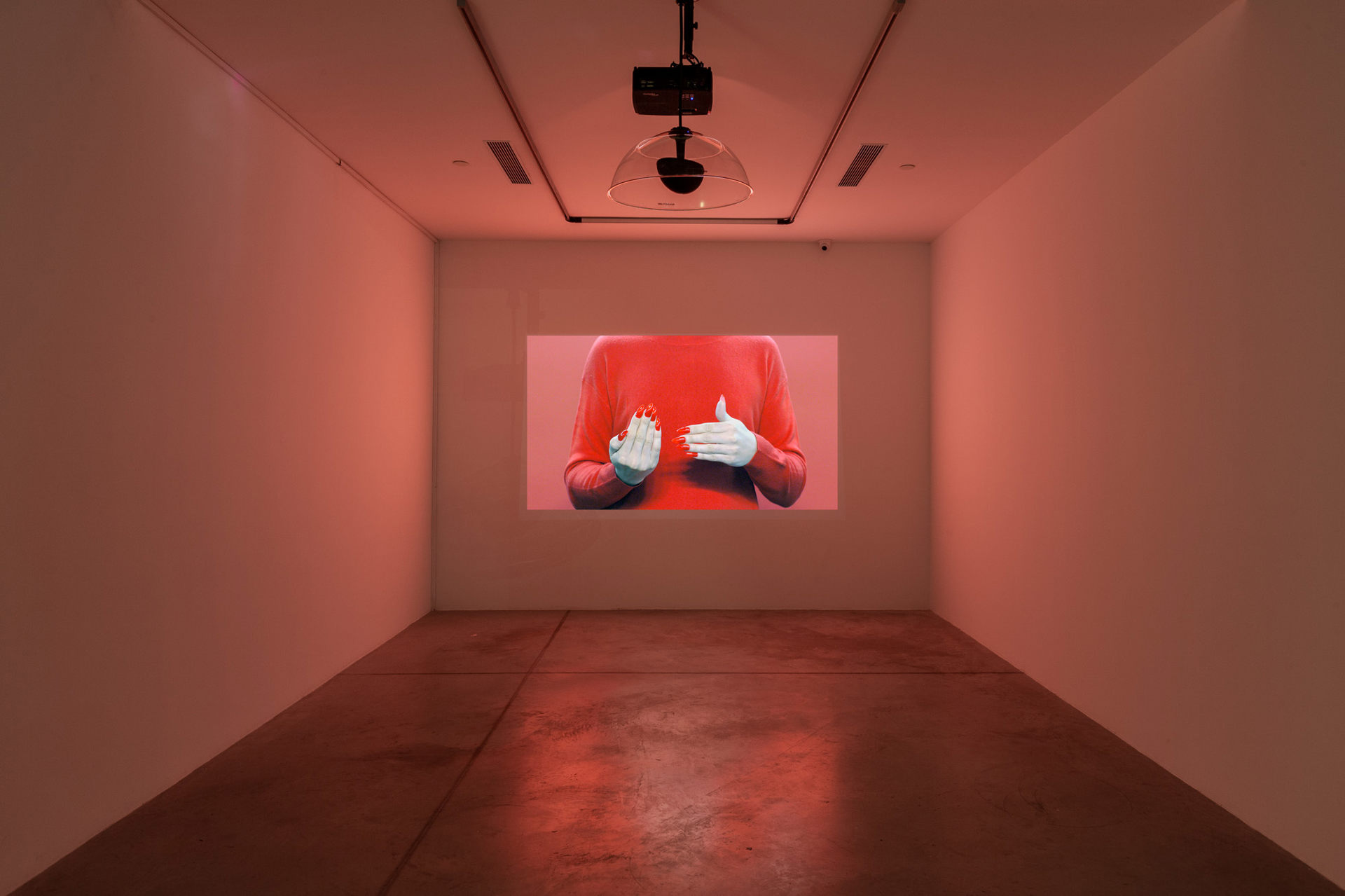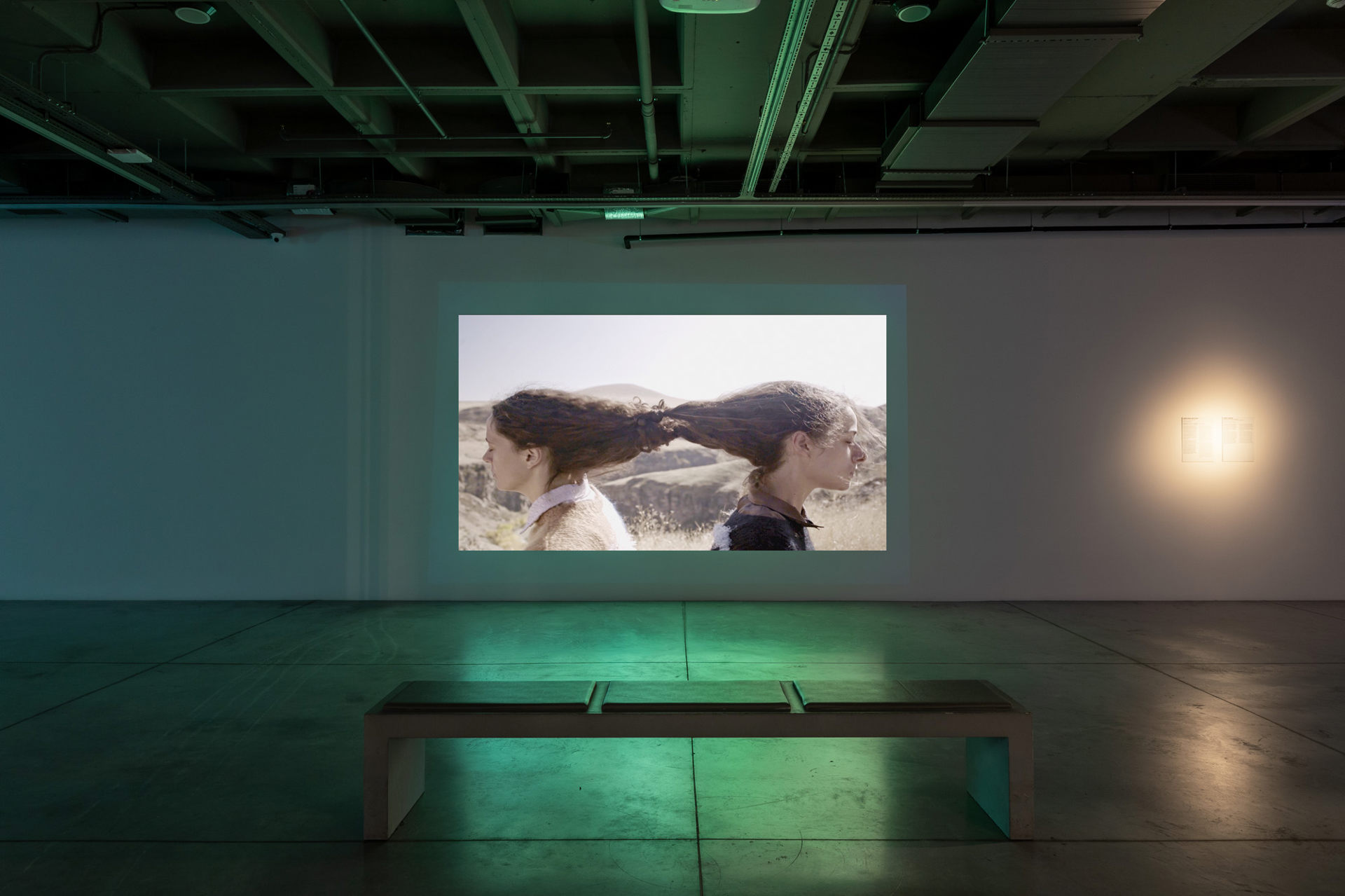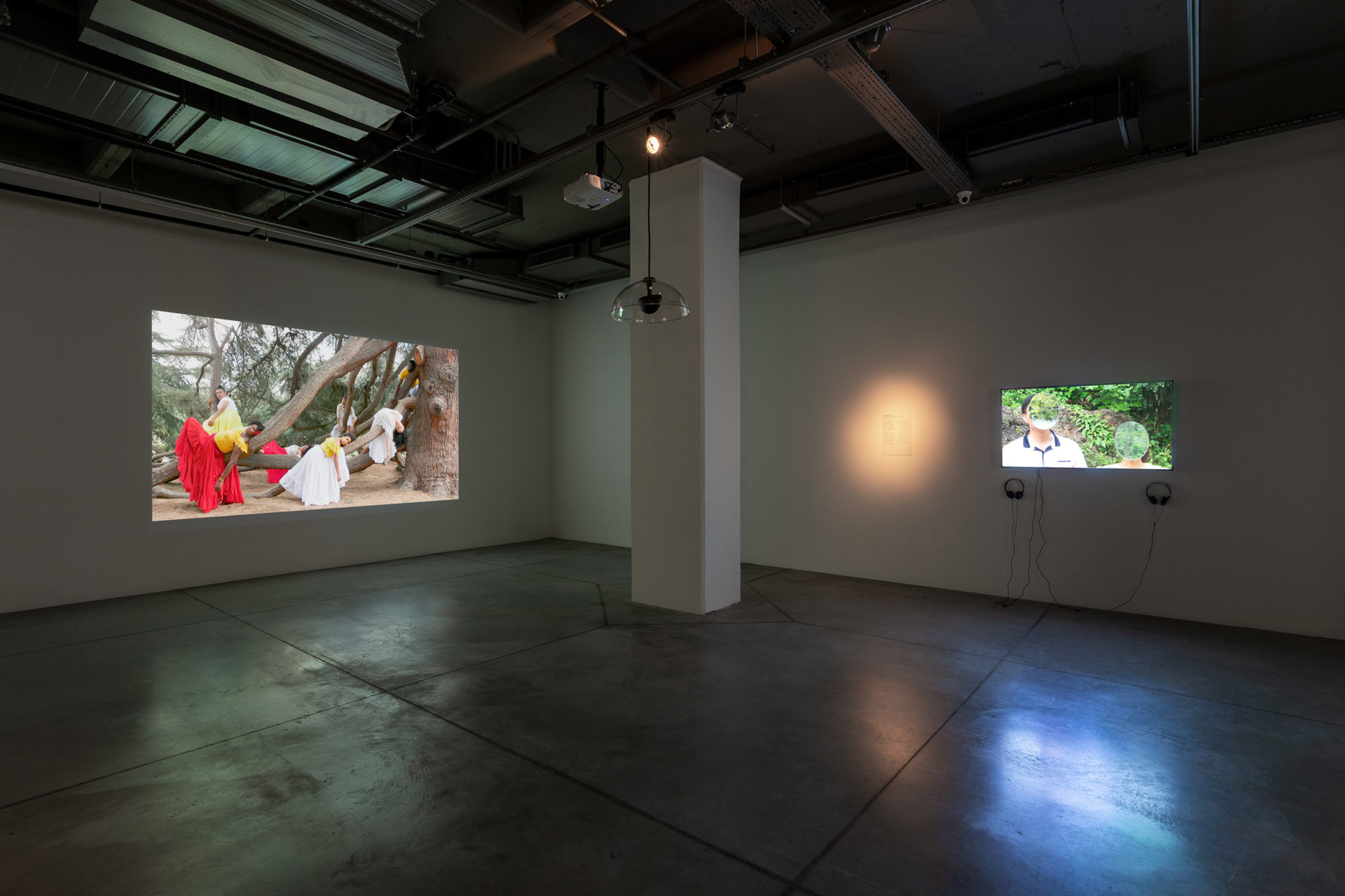- Closed Today
- Ticket
- Shop
- Membership
- TR EN
Artists’ Film International 2020 on "Language"
Istanbul Modern presents Artists’ Film International, a program featuring videos, animations, and short films by artists from around the world.
Every language is more than an instrument of communication between members of the community to which it belongs, it also represents cultural accumulation. Language is a tool for individuals to convey their thoughts and an important determinant of how they perceive and express the world around them.
Language and various insights related to language are the theme of this year's Artists’ Film International program. On the invitation of Istanbul Modern, artist Ergin Çavuşoğlu is participating in the program with his video "Desire Lines / Tarot and Chess". The video will be screened by Istanbul Modern and other international program partners throughout 2020.
Established by Whitechapel Gallery in London in 2008, Artists’ Film International is a partnership of 20 international organizations committed to sharing their research on moving image. Every year, each program partner selects a video by an artist from their country on a common theme. In previous years, Istanbul Modern participated in the program with videos by Ali Kazma, İnci Eviner, Ergin Çavuşoğlu, Sefer Memişoğlu, Bengü Karaduman, Burak Delier, Vahap Avşar, Zeyno Pekünlü, Cengiz Tekin, Pelin Kırca and Senem Gökçe Oğultekin.
In line with measures taken to curb the spread of the Coronavirus, Istanbul Modern decided to organize this year’s program as an online exhibition. Istanbul Modern curators determined the content of the exhibition for a total of eight films.
Artists: Ergin Çavuşoğlu (Istanbul Modern, Turkey); Yu Guo (KWM artcenter, Beijing, China); Ailbhe Ní Bhriain (Crawford Art Gallery, Cork, Ireland); Francesco Pedraglio (GAMeC, Bergamo, Italy); Raqs Media Collective (Project 88, Mumbai, India); Lerato Shadi (Friends of Iziko South African National Gallery, Cape Town, South Africa); Rhea Storr (Whitechapel Gallery, London, UK); Lisa Tan (Bonniers Konsthall, Stockholm, Sweden).
Program / Content: Öykü Özsoy Sağnak, Ümit Mesci
Ergin Çavuşoğlu
Desire Lines / Tarot and Chess, 2016
Single channel HD (2048 x 853) video, audio
29’ 3’’
Courtesy the artist, Extra City Kunsthal, Platform 0090 and FLACC
Produced with the additional support of SAHA Association
Born in 1968 Targovishte, Bulgaria, Ergin Çavuşoğlu lives and works in London. He began his education at the National School of Fine Arts Iliya Petrov in Sofia, and graduated from Marmara University, Istanbul. He received his MA from Goldsmiths College, University of London, and PhD from the University of Portsmouth.
Engin Çavuşoğlu frequently creates videos and installations that are situated in urban areas where private and public spaces intersect. These spaces, which the artist defines as "thresholds," serve as a border between individuals and their environment.
Ergin Çavuşoğlu’s work titled "Desire Lines / Tarot and Chess" centers on the universal qualities of human behavior and their relationship to past, present and future. Depicted through the lens of the literary expressions in Italo Calvino’s Castle of Crossed Destinies (Il castello dei destini incrociati, 1973), the video is transformed into a multi-layered narrative with various elements borrowed from literature. “Desire Lines / Tarot and Chess” alludes to Shakespeare's Hamlet, Macbeth and King Lear as well as to Faust, Oedipus and other classics.
Ailbhe Ní Bhriain
Inscriptions (One Here Now), 2018
Video
14’ 54"
Born in 1978, the Irish artist Ailbhe Ní Bhriain received her BFA from Crawford College of Art in Cork, Ireland, her MA from the Royal College of Art in London, and her PhD by Practice from Kingston University.
In addition to videos, the artist utilizes other media of expression such as digitally produced images and photographs. She collaborates with musicians and composers to create displays and installations where audio recordings, live performances and improvisations are part of the process.
In "Inscriptions (One Here Now)" Ailbhe Ní Bhriain merges real images with images produced on the computer to present an environment that eliminates space perception. Each sequence of the video draws viewers deeper inside an abandoned quarry where animals are observing their surroundings. The artist aims to link the visual composition of limestone layers and traces left by people with the forms of "Ogham", the ancient Irish alphabet. Through her references to this archaic alphabet and animals on the verge of extinction, the artist questions the relationship between the natural environment and humans from antiquity to the present day.
Lerato Shadi
Mabogo Dinku, 2019
Video
6’
Lerato Shadi was born in Mahikeng, South Africa, in 1979 and lives and works in Berlin. After graduating from the University of Johannesburg in 2006, she completed her MA at the Kunsthochschule Berlin-Weißensee.
The artist utilizes a variety of techniques such as video, performance and installation in her works, which frequently address successive processes. While challenging the widespread assumptions of Western civilization with her critical approach, she underlines how the history of the world cannot be evaluated from a single viewpoint.
In the video titled "Mabogo Dinku," Lerato Shadi makes undecipherable hand gestures as she reads verses in a South African language. The artist does not provide viewers a tool for deciphering her words and gestures. In this manner, she seeks to bring into view both the history of people marginalized during the apartheid regime — the official state policy of racial segregation that existed in South Africa between 1948 and 1994 — and the effort to describe the indescribable. She uses her own language rather than translating it into English or another dominant Western language for precisely this reason: to narrate the reality that differs from the history of Western colonization. For Lerato Shadi, an absolute commitment to the acceptance of the "West” as something universal can only be a tool to further suppress the "others."
Rhea Storr
Junkanoo Talk, 2017
Video
12’
Born in 1991 in Leeds, United Kingdom, Rhea Storr lives and works in London. She received her BFA from the University of Oxford in 2013 and her MA from the Royal College of Art in 2017.
Often working in video, the artist focuses on ethnic identity and related issues. She also explores how concepts associated with culture can be represented in moving images.
Rhea Storr, who is of Bahamian origin, uses a language without words in her video "Junkanoo Talk," named after a carnival in the Bahamas. The artist asserts that language must be both culturally specific and engage universally. The sounds and multicolored carnival costumes used in the video make it easy to recognize the language of the celebration, which the artist wants the audience to join. Incorporating quotes from activist writer James Baldwin and the Bahamas Minister of Tourism, the artist offers viewers the opportunity to think about language and identity through the body. Displayed only partially, the body and multicolored costume that covers it are considered by the artist to be abstract mediators to convey topics that she wants to open to debate, such as identity politics.
Yu Guo
Enchantment (Jiéjiè), 2019
Video
12’ 57"
Born in 1983 in the Sichuan Province of China, Yu Guo completed his BFA at the Sichuan Fine Arts Institute. The artist lives and works in Chongqing, China.
Yu Guo depicts obscure environments that are difficult for viewers to recognize. Despite this ambiguity, the different environments, which the artist builds using two-dimensional components, provide a perceptible context through their basic characteristics. As the artist transposes the subjects he portrays using a limited number of images in these environments, he creates a simple but powerful language of composition.
Used by Yu Guo in his 2019 video work, the concept of "jiéjiè" may be defined as the protective field created by a group of people in a collective consciousness in Buddhist culture. In the video, the artist reconsiders the concept of “jiéjiè” in urban spaces equipped with communication tools. For the artist, phone screens or windows in subway cars are elements through which individuals interact with the world outside them in a variety of ways. The unique narrative languages of these phenomena are not the only issues that Yu Guo deals with; while revealing his research on the concept of “jiéjiè,” he also questions the need for a new language.
Francesco Pedraglio
Scripting anticlockwise (6 constellations) / Racconto antiorario (6 costellazioni), 2017
Video
10’ 4’’
Born in 1981 in Como, Italy, Francesco Pedraglio lives and works in Mexico City. A writer as well as an artist, Pedraglio collaborates with Tania Pérez Córdova on an artist-led, independent publishing project in Mexico City and London, called Juan de la Cosa / John of the Thing.
Francesco Pedraglio does not treat language solely as a tool for describing and conveying various situations or works of art, he also emphasizes the relationship it creates between the narrator and the listener. By observing the different components between the narrator and the listener, he tries to find new contexts for them. With this approach, language is the artist's main tool of interaction in his work.
In this video, Francesco Pedraglio presents a performance taking place around a column in a dark space which he records by moving his camera counter-clockwise. The abstract representation, which depicts six possible constellations, gains dimension through the use of light within this dark space embodying different movements, shapes, surfaces, colors and this video. The backbone of the video is this particular language of narration consisting of elements beyond words, which creates a system of expression unique to this work.
Raqs Media Collective
Passwords for Time Travel, 2017
Video
10’ 1’’
Raqs Media Collective was established in 1992 by Monica Narula, Shuddhabrata Sengupta and Jeebesh Bagchi. Based in New Delhi, the collective takes part in leading biennials and art events around the world and curates various exhibitions.
Cities and topics related to the city have an important place in Raqs Media Collective's research on social and political matters. In their art practices, members of the Collective utilize different techniques of expression that then lay the grounds for theoretical discussions. In addition to creating works of art, they present their research to the public at conferences and in publications.
"Passwords for Time Travel," the title of this video, hints at the content of the work. The artists convey to the audience the new words they conjure up by imagining near and distant futures in the form of a video dictionary. The words that appear on the screen with their pronunciations and meanings embody multi-layered references to the images behind them. The artists anticipate things which have not yet been experienced and describe them in order to analyze the people and environment of the future.
Lisa Tan
My Pictures of You, 2017-19
Video
23’
Born in 1973 in Syracuse, New York, Lisa Tan teaches at the Konstfack - University of Arts, Crafts and Design in Stockholm, Sweden. The artist studied her undergraduate and graduate degree in the USA and her doctoral studies in Gothenburg, Sweden.
Lisa Tan produces photographs, texts, installations and videos, and uses images and language to explore how individuals' political consciousness, individual subjectivity and tendencies are shaped. While determining her research processes, the artist examines personal facts as well as theoretical concepts.
In her video titled "My pictures of you," Lisa Tan portrays her studies of image and language with a personal road story. The artist also addresses the climate crisis and its consequences by associating photos of Mars with the future of the planet Earth. At the same time, she references Camera Lucida (1981), the photography theory book written by the French theorist Roland Barthes, one of the founding fathers of semiotics, during his process of grief following his mother's death. Similar to Roland Barthes, Lisa Tan considers conceptual issues by addressing personal stories in her video.
Artists’ Film International 2020 Program Partners
Ballroom Marfa, Marfa, Texas, USA
Belgrade Cultural Centre, Belgrade, Serbia
Bonniers Konsthall, Stockholm, Sweden
CAC, Vilnius, Lithuania
Centre for Contemporary Arts Afghanistan (CCAA), Kabul, Afghanistan
Crawford Art Gallery, Cork, Ireland
Fundación PROA, Buenos Aires, Argentina
GAMeC / Gallery of Modern and Contemporary Art in Bergamo, Italy
Hammer Museum, Los Angeles, USA
Friends of Iziko South African National Gallery, Cape Town, South Africa
KWM artcenter, Beijing, China
Mohammad and Mahera Abu Ghazaleh Foundation, Amman, Jordan
Moscow Museum of Modern Art, Moscow, Russia
Museum of Modern Art in Warsaw, Warsaw, Poland
n.b.k. / Neuer Berliner Kunstverein Video – Forum, Berlin, Germany
Para Site, Hong Kong
Project 88, Mumbai, India
Tromsø Kunstforening, Tromsø, Norway
Whitechapel Gallery, London, United Kingdom



